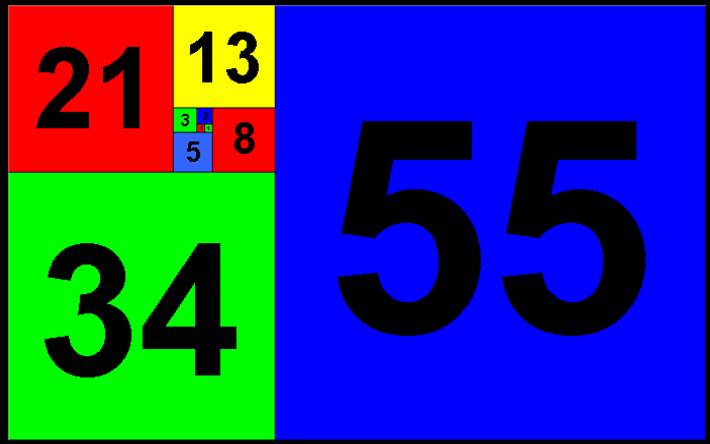
Theorem of the Day
0, 1, 1, 2, 3, 5, 8, 13, 21, 34, 55, 89, 144, 233, 377, 610, 987, 1597, 2584, 4181, 6765, 10946, 17711, 28657, 46368, 75025, 121393, 196418, 317811, 514229, 832040,1346269, 2178309, 3524578, 5702887, 9227465, 14930352, 24157817, 39088169, ...
The Fibonacci Sequence, beginning 0, 1, 0+1=1, 1+1=2, 1+2=3, 2+3=5, 3+5=8, ..., is one of mathematics' most iconic objects. Its link to the golden ratio; its appearance in the analysis of Euclid's algorithm; its application in data compression; its cameo role in that monumental fusion of number theory and mathematical logic, the DPRM Theorem — it is so simple and yet seems woven into the fabric of our universe.
See if you can locate the theorems just alluded to among those on display at this site. Visit the websites of the Fibonacci Association and of Ron Knott. Browse recent contents of the Fibonacci Quarterly to see what a wealth of mathematics the sequence continues to yield. Type 'fibonacci' into the search window of N.J.A. Sloane's incomparable On-Line Encyclopedia of Integer Sequences to appreciate of what a large iceberg is 1,1,2,3,5,8,... the tip.
The image above, which acts as a kind of logo for Theorem of the Day, is a stylised version of the logarithmic spiral underlying the growth in the terms of the Fibonacci sequence. The colours were chosen by appealing (trivially, of course) to the Four Colour Theorem. The font sizes of the successive numbers are in the same ratio to each other as the Fibonacci numbers (that is, in the limit, the golden ratio).
The image replaces the original artwork which Justin Mullins kindly let me use on my home page:
This is the work of an artist, which I am not, and it is arguably a better image to represent the essence of the mathematical theorem. But we live in an age of surfaces; brand recognition is everything!